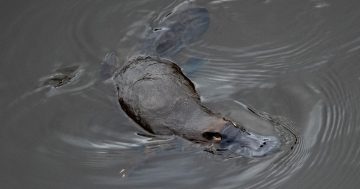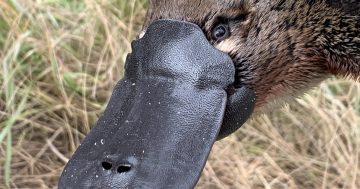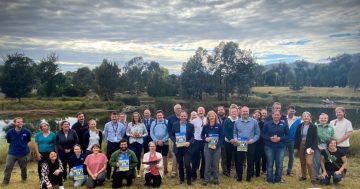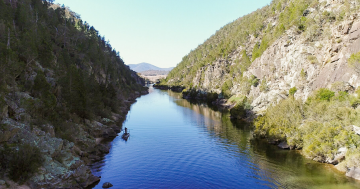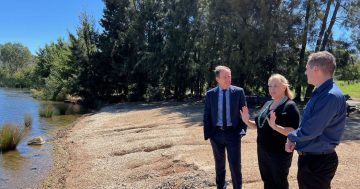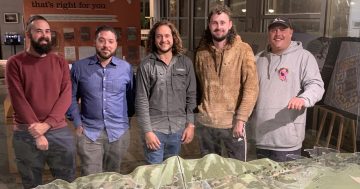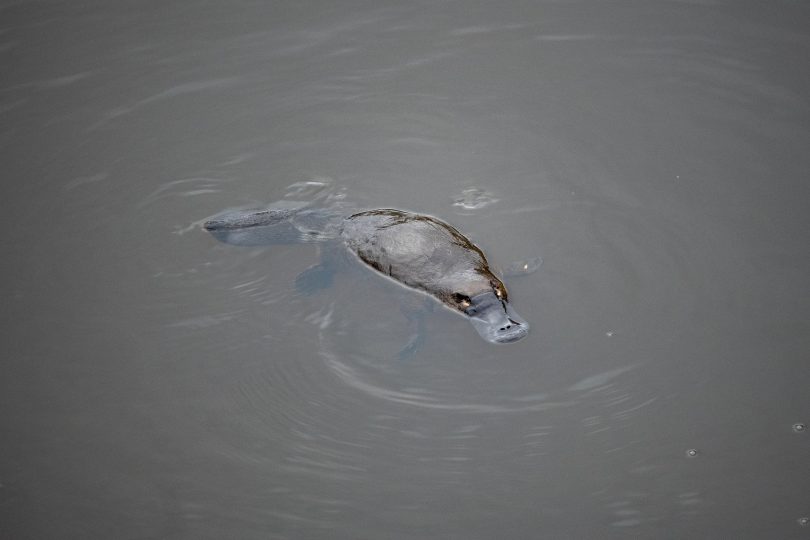
This rare shot of a platypus in its natural habitat so close to a city was captured during Upper Murrumbidgee Waterwatch’s platypus walk along Queanbeyan River last weekend. Photo: John Martin.
UPDATED 19 August, 3:15 pm: Due to the COVID-19 lockdown, Platypus Month activities have been postponed.
19 August, 9:00 am: In some good news, we’re seeing more platypus in our rivers. But unfortunately, that’s also bad news. It’s good because they are seriously cute carnivores. But bad because they’re becoming more visible – read, vulnerable – as they look for new food sources.
Their food of choice is water bugs – tiny little critters. But at this time of year, that food source starts to decline and female platypus, at least lactating pregnant ones, are known to eat their own body weight in water bugs. Females can weigh up to 1.5kg, and males up to 2.5kg.
Also at this time of year, the males are on the move, starting to get ready for the breeding season and the search for love.
When there’s a change in the water environment, there’s also a change in available food and the need to find a new source of food supply. Water bugs are a great indicator of the health of a catchment area – that is, the water quality. The more platypus you have in the river, the better the condition of the river.
According to Upper Murrumbidgee Waterwatch regional facilitator Woo O’Reilly, now is the time of year there’s “lots of stuff going on”.
Although everyone is encouraged to keep an eye on their waterways throughout the year, August is ‘platypus month’, prime time for spotting the animals when they are active throughout the day.
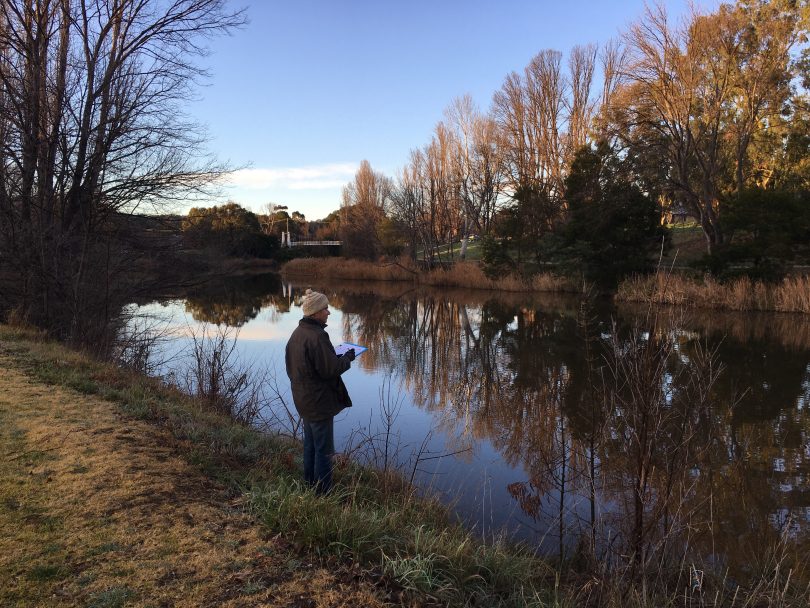
An Upper Murrumbidgee Waterwatch volunteer surveys platypus activity in Queanbeyan River. More volunteers are needed to help monitor and record platypus activity in our waterways. Photo: Upper Murrumbidgee Waterwatch.
Woo coordinates a number of platypus walks and surveys, all designed to observe and record the health of platypus in our region. Such is the popularity of the walks that both of them were booked out almost immediately after they were advertised.
And it’s clear why. On last weekend’s walk along Queanbeyan River, John Martin spotted a platypus floating about and took the remarkable shot at the top of this page.
The platypus survey, according to Woo, is one of the best ways to determine how our platypus population is faring in the ACT and surrounds.
The group will conduct 34 surveys throughout August. Usually volunteers can help, but COVID-19 restrictions apply this year.
“We coordinate 10 volunteers on a stretch of the river for about one kilometre for an hour,” says Woo. “Every 10 minutes or so we check to see if they’ve seen anything.”
Although all waterways are of interest, there are two particular stretches where Waterwatch is keen to find out more about its inhabitants.
The first is Ginninderra Creek, below Lake Ginninderra. Although there have been no confirmed sightings of platypus here since this section of the lake was built in the 1980s, there have been a number of unconfirmed sightings so Waterwatch is keen to hear about them, preferably with photos.
The other site of particular interest is Gudgenby River, in Namadgi National Park – the catchment destroyed by the Black Summer bushfires. Although there were pre-fires sightings, there have not been any since. Photographic evidence is welcome of platypus in the main river or tributaries, including Bogong Creek, Rendezvous Creek, Dry Creek and the lower section of the Orroral River.
“Sometimes it’s hard to tell what’s where,” says Woo. “But then you come across what we saw on the Murrumbidgee River near Bredbo – seven or eight individual animals in one survey.”
How did they know it wasn’t the same platypus? Slightly different colouring on each of the monotremes, as well as more than one appearing at the same time.
So what does the future look like for the platypus in our region?
“I’d say we’re doing okay,” says Woo. “It is so awesome for people to see them in the wild. We are really lucky in this area that so many people have the opportunity to see them in their natural habitat. It’s a real thrill.”
More information is available at Upper Murrumbidgee Waterwatch.












